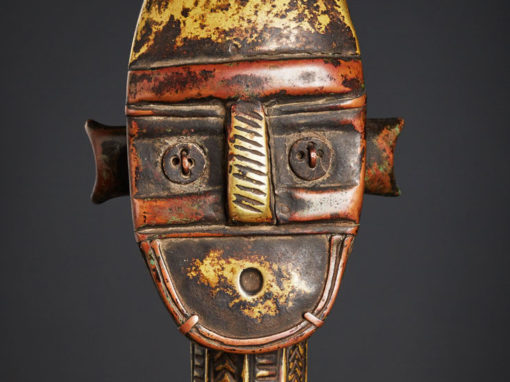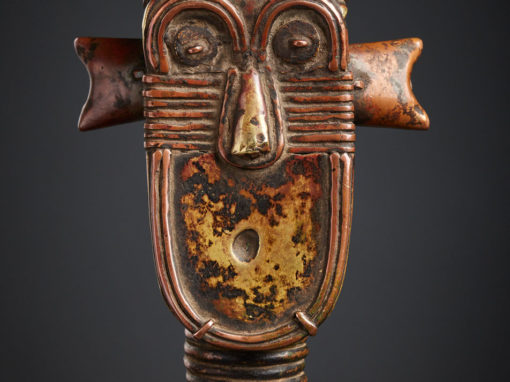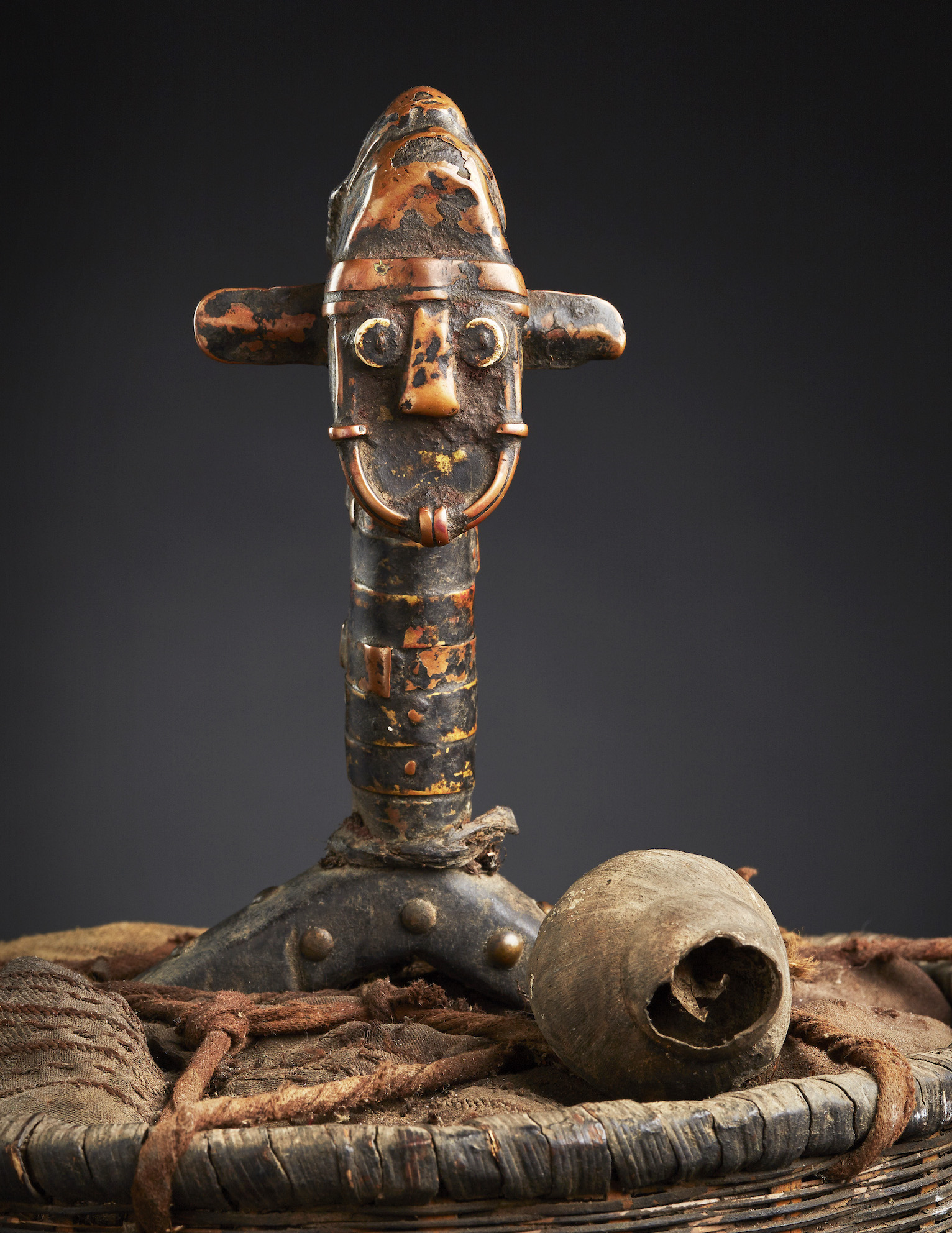
A reliquary ensemble containing a sculptural element (gardien de reliquaire)
origin: equatorial forrest, africa
region: gabon (Massango or Shamaye or Sango or Sangu)
age : XIX – XXth century
figure: Mbumba Bwiti, reliquary figure (figure d´ancêtre)
size / material: hight ets. 26,0 cm / head ear to ear est. 7,5 cm/ rhombus est.14,0 cm / neck wide est. 2,5 cm, deep est. 3,0 cm / lower base 5,7 cm – wood, brass, copper, bone or ivory, plant material, nails
basket / Material: wide est. 26,0 cm / height 11,0 cm, wicker basket (possibly old replacement, could be original), filled with cloth, seeds, fiber
A small reliquary figure in a wicker basket that stylistically seems to be related to the Kota „Sangu“(Sango?) or even further north to the „Shamaye“.
One can only wonder at this remarkably subtle Kota guardian figure embedded in a „Mbumba Bwiti“ of the Shamaye, whose power is attested by the still firm anchoring of the rhombus (body) in its accompanying wicker basket filled with seed, fiber and covered by cloth
Objects like these that display skills and perfection on the highest known level remain rare pieces of Gabonese art
This example was found in Bruxelles (private collection) and was acquired for our collection via Mr. Issah Mbohou, Bruxelles.
Very thin copper sheets fixed to the amazingly shaped head with staples and forged nails complemented by metal strips encircling the neck, alternating yellow and red copper, partially folded and superimposed.
In some places we can catch a glimpse of the surface of the dark patinated wood.
It is a classic execution of a master´s hand that enhances the chromatic contrast between the brilliance of the metal and the patina of the wood, shimmering through decades of repeated ritual use. The beautiful face outlined with flattened copper wire is decorated with fine, small eyes (bone or ivory) that sit under lines of finely crafted cupper stripes that form a harmonious impression of a full face containing eyebrows and a forehead. The eyes are attached in the traditional way – with fiber material.
The stylized ears elongate the face to the outer edges, imparting an aural acuity benefitting a mighty and powerful guardian. Such harmony is quite rare. The whole ensemble is complemented by the shell of a snail, which not only plays an important role in African medicine but can also be a mediator between the worlds.
It is an unpublished reliquary figure, a unique specimen that has been in private hands for many years.
(This text contains excerpts from sothebys, christies – inspired by Frédéric Cloth)

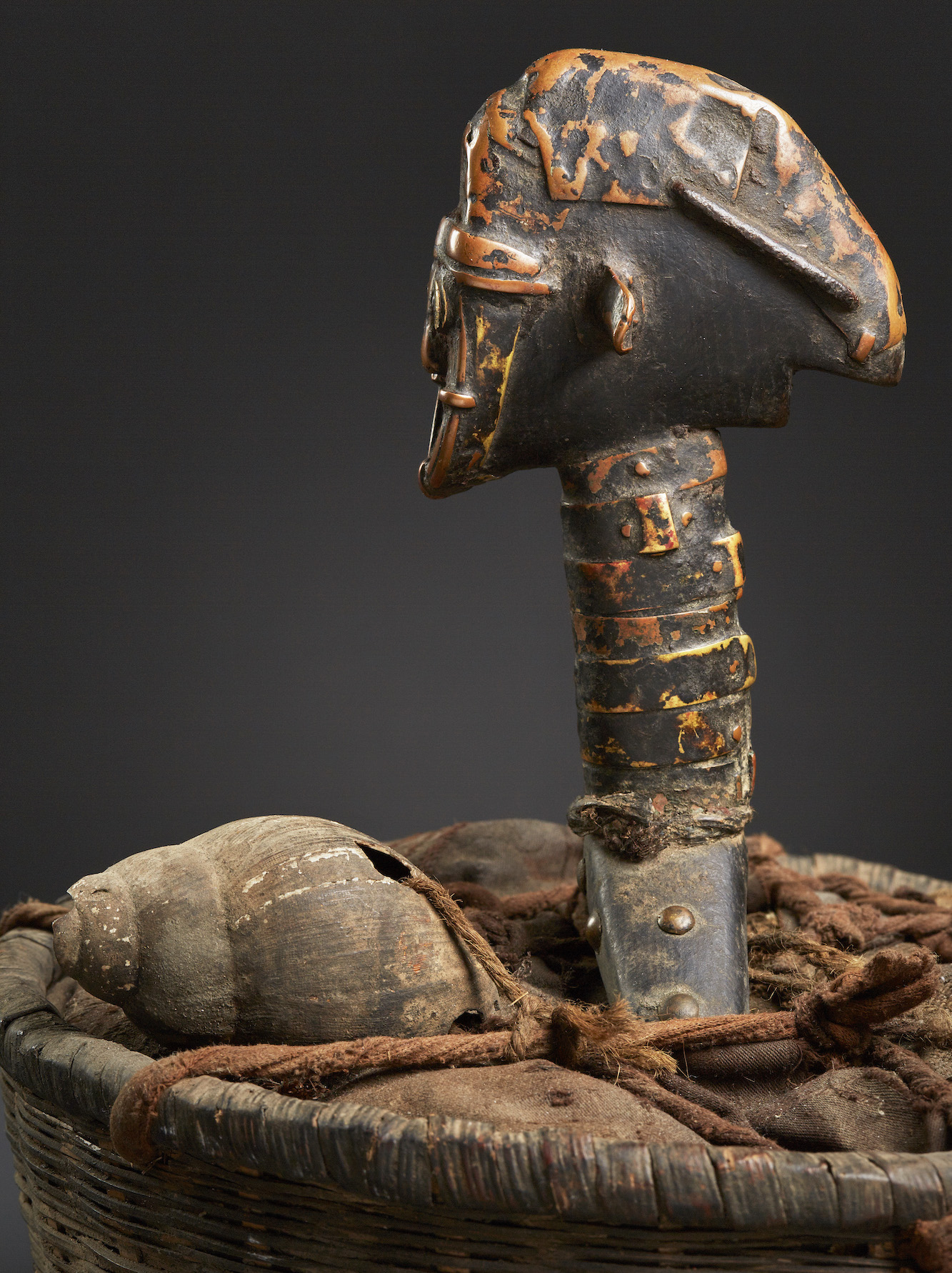
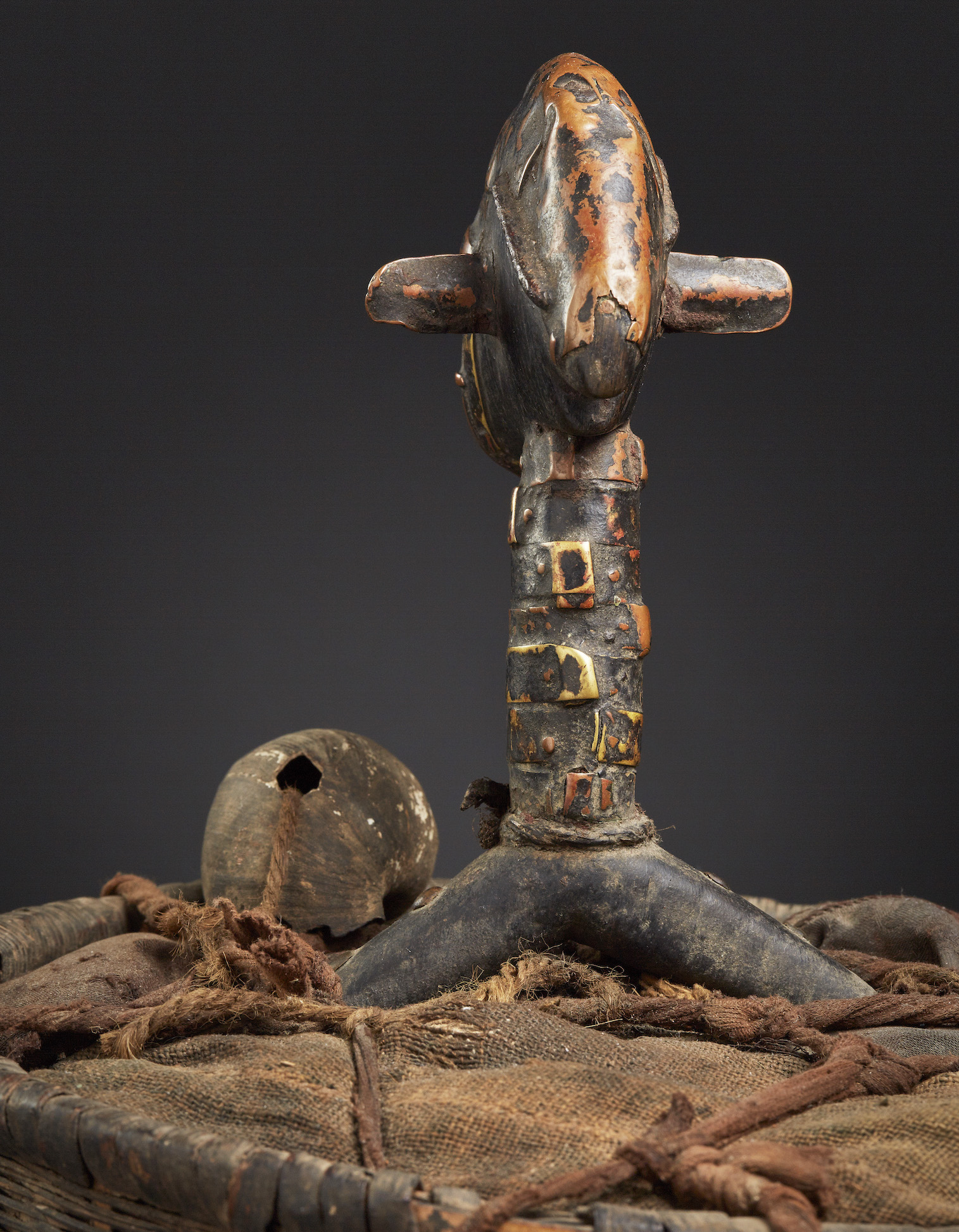
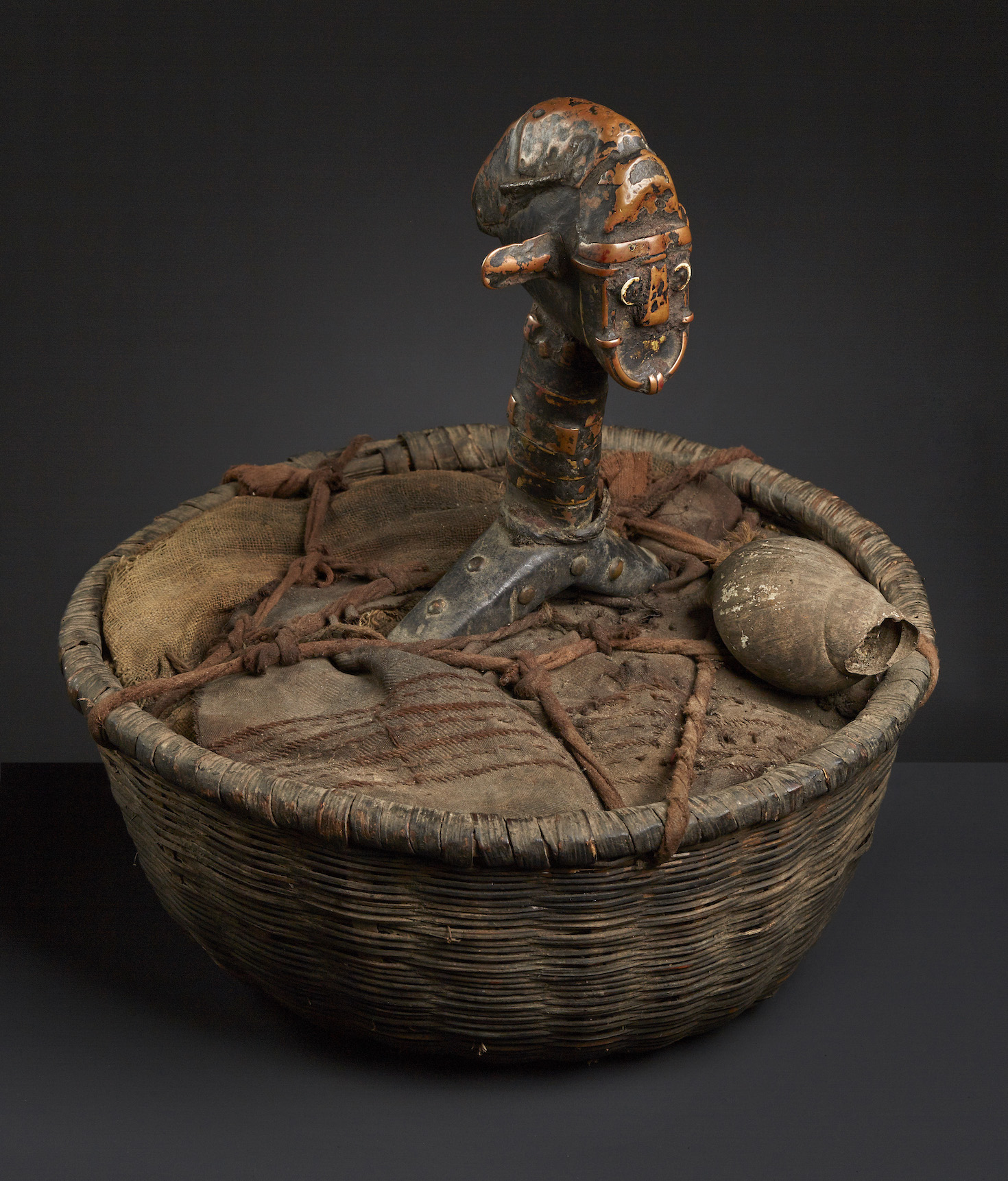
Notes:
see LaGamma (2007: 250, n° 76), for a very comparable figure, from the former Paul and Ruth Tishman collection, New York, around 1968 and Sotheby’s, New York (May 17, 2007, n° 23) for another , from the Saul and Marsha Stanoff collection, but with different ear shapes.
Linked to the cult of the ancestors – lineages or brotherhoods – the Mbumba Bwiti commemorative figurines were placed in the basket containing the relics, but also seeds, shells, etc.
In 1887, Pierre Savorgan de Brazza published, in „Exploration in West Africa“ ( Tour du Monde , 1887.II: 328), an engraving showing figures comparable to this one, observed on the edge of the Ogooué, in the region of present-day Franceville. Here, the Sango style makes it possible to attribute this small reliquary figure probably to the region of Lastourville.

